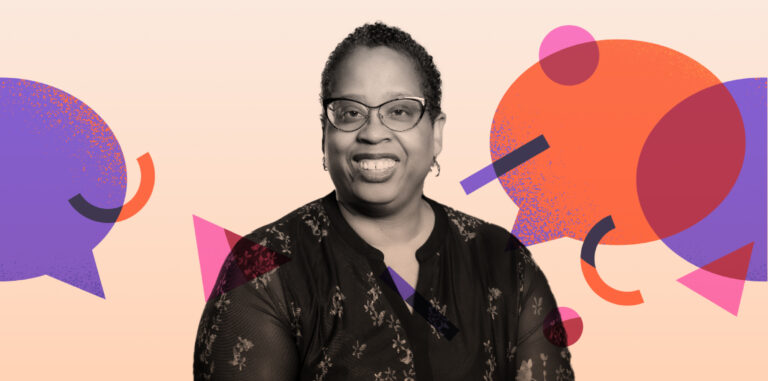Staying focused in uncertainty: Inside sustainability communications

Bladonmore’s David Willans discusses how sustainability communicators can navigate the rapidly changing landscape with Jesse Hertstein. Jesse leads sustainability strategy, including communications, at BDO USA. BDO is the fifth largest accounting and professional services group globally. With decades of experience in sustainability and communication roles, Jesse supports BDO’s corporate sustainability and its advisory practice.
Thanks for taking the time, Jesse. We’re living through a lot of change, how do companies stay anchored?
It all comes down to materiality. The businesses that are managing well have a clear understanding of what really matters to them and their stakeholders. With that grounding, you don’t need to react to every headline or policy shift. You can stay focused on what’s important to your organization.
Without a strong foundation, everything is in question. Companies that haven’t undergone the process of a materiality assessment have to spend time justifying what they’re doing on sustainability, at first just internally, but now externally too. Materiality gives you clarity and confidence. It helps you tie sustainability to your business goals and should deliver proof of business value. It helps you to stay the course. Adapting to external changes is then about refining your messaging, not overhauling it.
How are you seeing sustainability communications change?
There’s a shift happening, away from emphasizing sustainability risks and towards framing sustainable business practices as a way to uncover long-term business value. Instead of saying, “Our supply chain is at risk from climate change and human rights abuses,” it’s, “Sustainable business practices can make our supply chain more resilient and cost-effective.”
The risks still need to be communicated, but I’m seeing a shift towards highlighting the opportunity and how sustainability creates value while solving business problems. This also means there’s more specificity in communications, more tailoring for different audiences and less generic ESG jargon.
We’re seeing lots of backtracking, in part because business is realizing there’s only so far they can go in an unsustainable system. How should companies approach this challenge?
It’s a tough balance. Sustainability targets are often dependent on things businesses don’t control, like clean energy availability or supplier capabilities. I’ve started seeing some companies using contingent goals, such as, “We aim for net zero by 2040, but our progress depends on the continued expansion of the energy grid and/or advances in sustainable aviation fuel.”
Done well, this adds realism and credibility, showing that the company understands the bigger picture. Done poorly, it can look like an excuse for a lack of progress. It really comes down to transparency. Stakeholders don’t expect companies to fix everything alone, but they do expect honesty about what is and isn’t possible and they do expect to see companies make good-faith efforts to invest in their commitments.
Many tend to just turn off the communications, opting for a greenhushing approach to avoid any risk, particularly as politics and rhetoric ramp up. In my experience, silence isn’t the best option. It leaves too much on the table for others to write your narrative. Transparency is much better practice.
How much of an issue is greenhushing?
Greenhushing is growing, and there are short-term and long-term reasons for this. In the short term, silence is driven by uncertainty in the political and regulatory environments. Many companies aren’t saying much because they’re waiting to see how disclosure requirements play out or what their peers do. There’s obviously a risk that, the longer this uncertainty continues, the more ground – and value – companies lose out on because of their silence.
The long-term driver of greenhushing is an overall shift in sustainability communications. Going back a few years, it was pretty much all positive, and mostly about commitments, pledges and the bright future we all want for people and the planet. In general, business overleveraged the reputational benefits of these commitments. As time went on, people expected to see real change, especially the younger generation. But the problems are still here, so scrutiny and skepticism have increased. And not just from sustainability advocates like us, but from mainstream media and the general public, too. Greenhushing is the reaction, or overreaction.
What I’ve seen is that leading organizations fill the greenhushing void with honesty, about the issues that are important to their stakeholders, and about what they are doing to address those issues, including what is and isn’t working, and why.
What should sustainability communicators focus on right now?
There are three really important things that they should be focusing on. First, anchor communications in materiality. If it’s not core to your business, why are you talking about it? Second, balance communications about risk with a strong emphasis on benefits. Show how sustainability solves business problems, not just how it supports compliance. Third, be transparent about progress and systemic barriers. Acknowledge your dependencies, but don’t use them as an excuse for a lack of progress.
Sustainability communications aren’t just about boosting reputation anymore. With the state of the world, the urgency of the issues and the levels of concern around those issues, it’s about creating connections that help organizations stay focused, align with their stakeholders, make smarter decisions, and drive real change.
If you’d like help communicating your sustainability work, goals or strategy, please get in touch.
Share article


